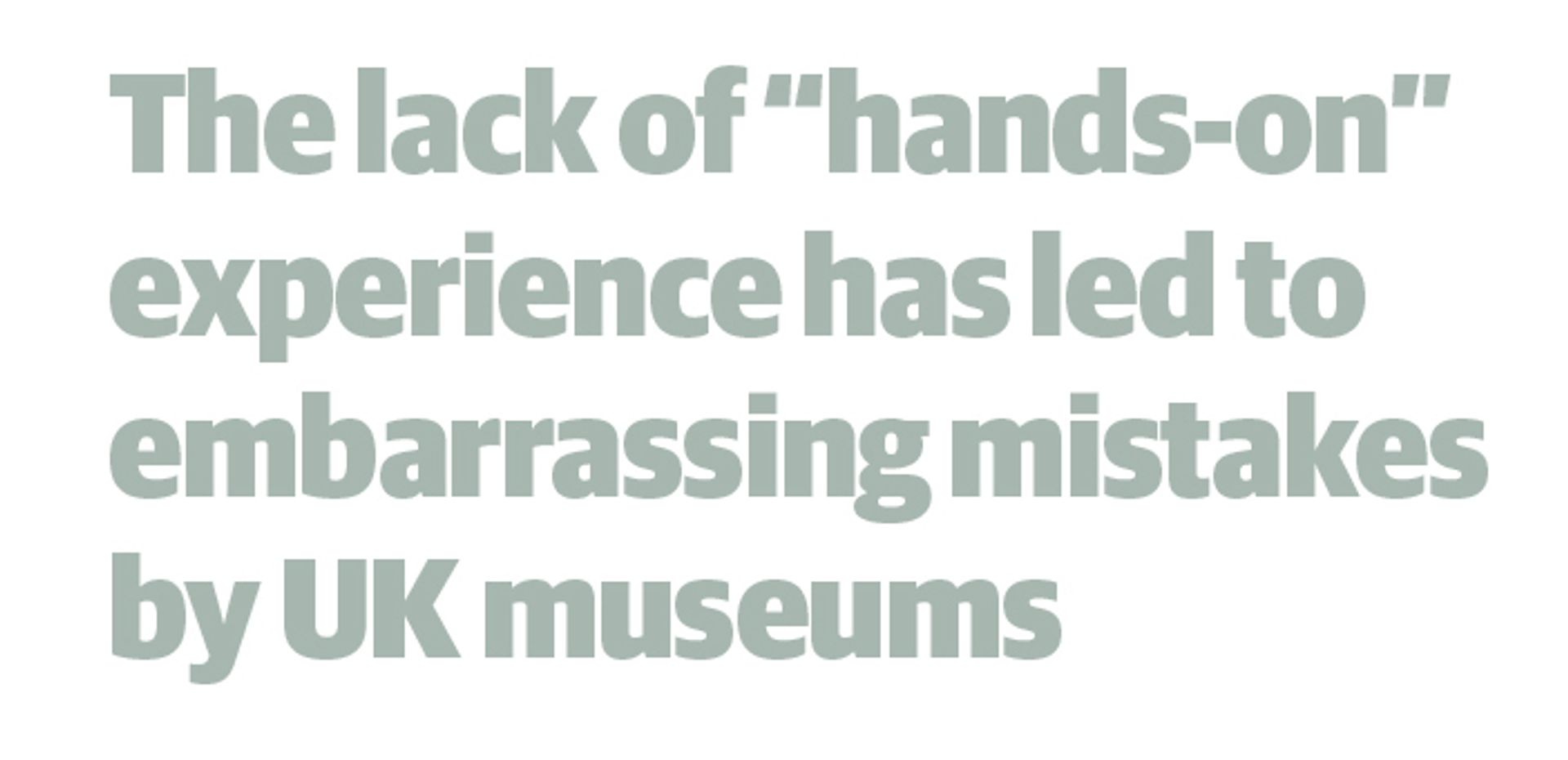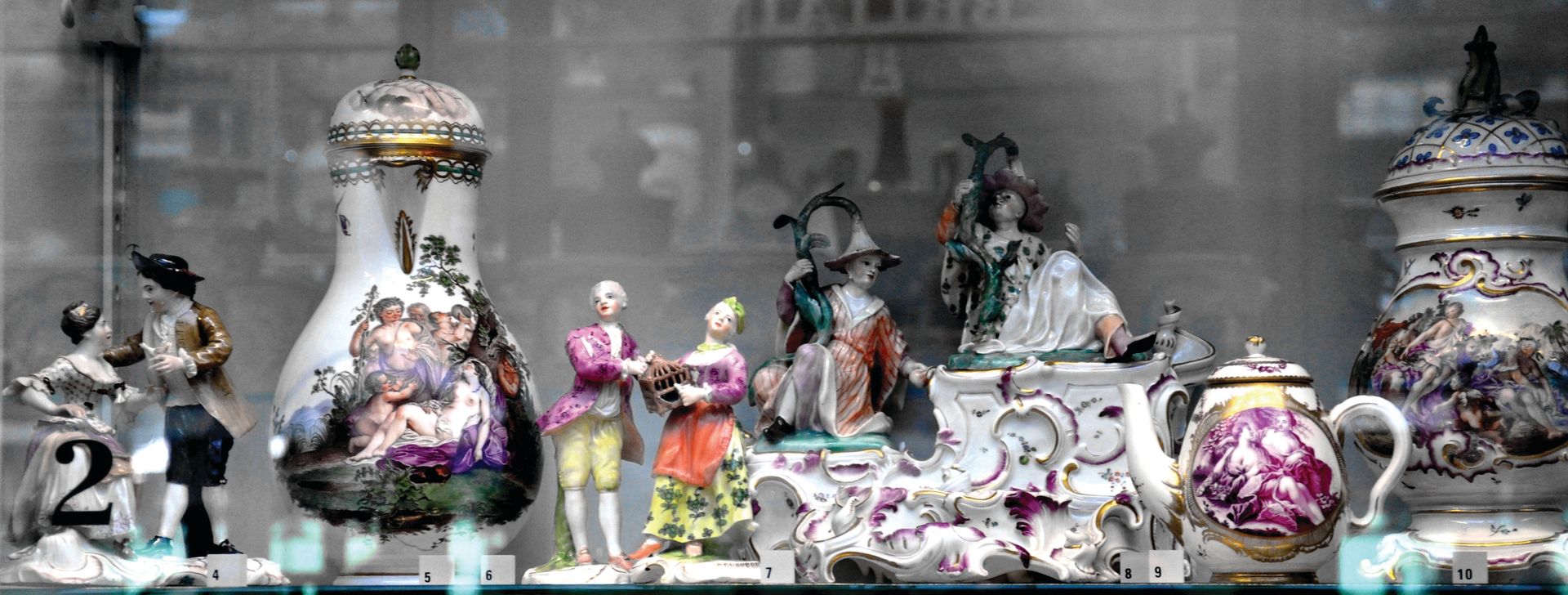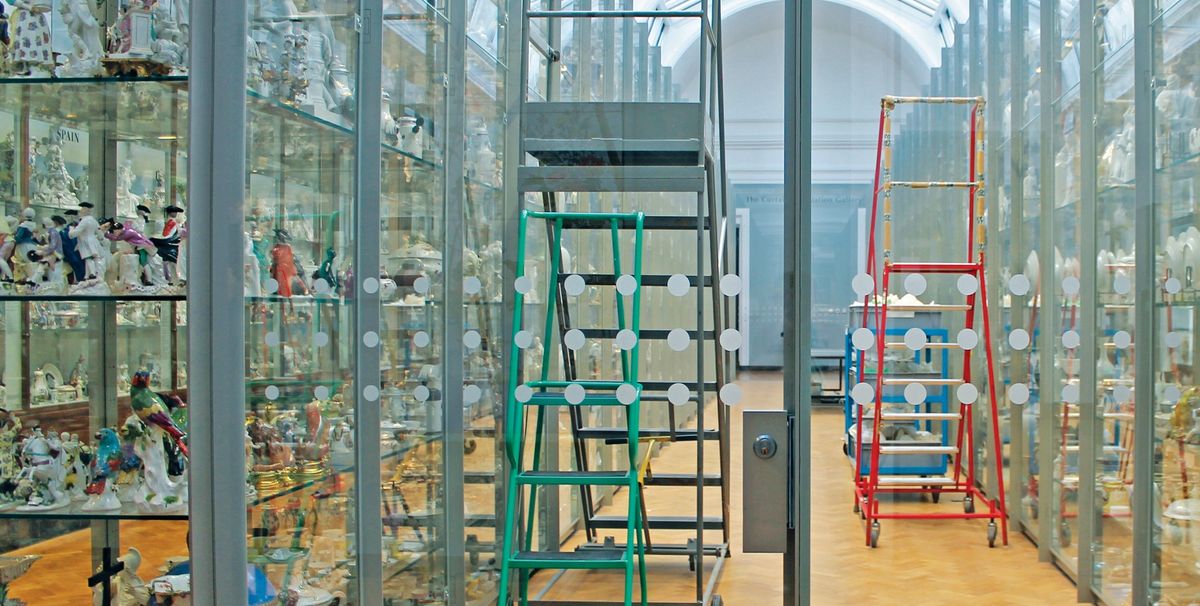What if the Natural History Museum in London quietly ceased to have an expert in most of its species of coleoptera (beetles to you and me), one of the most numerous forms of animal life? Would we not feel that it was failing in its basic responsibility to both the collections and the public?
This is the equivalent of what has happened at the Victoria and Albert Museum (V&A) in London, which used to be a world leader in its knowledge of most branches of the decorative arts. Since 2016 it has been without an expert in its English and Continental porcelain—some 30,000 pieces.
If you need someone to tell you what your porcelain shepherdess is, you would do better going to a dealer than to the museum (and don’t bother with Sotheby’s or Christie’s, which have all but abandoned the decorative arts in favour of big-ticket fine art).
In the light of world affairs, this may not seem very important, yet to have a museum that does not give priority to knowing its contents—not just from the labels written by past curators, but by the direct and evolving experience of its current staff—is like having a library whose librarians cannot read the books.
It is symptomatic that the museum now considers the giving of opinions a drag on its curators’ time and devotes only three hours a month to it. Until the 1990s, it reserved two afternoons a week for telling the public what their precious heirlooms were. This duty was taken very seriously, and was considered one of the services the museum should provide in exchange for its government funding. It was also excellent training, for while it was rare to come across an important piece, it required the same techniques of connoisseurship to identify a piece of late decorated Sèvres porcelain as the genuine item.
In fact, it was by studying the mediocre and the fake as well as the masterpiece that you honed your eye.

The lack of this “hands-on” comparative experience has led to some embarrassing mistakes by UK museums in recent years, as Mark Jones, a previous director of the V&A, reminds us with the tale of the Greenhalgh fakes (opposite). Fakes are proliferating and museums in the US and Continental Europe have been falling for them. There is an absolute need for curators with material as well as theoretical knowledge to be able to fight back.
This gap in the V&A’s knowledge raises doubts as to whether it can fulfil its duty as the official advisory body to the Reviewing Committee on the Export of Works of Art, and the attrition of expertise has been raised informally with Hayden Phillips, the committee chairman.
The V&A is responsible for judging the importance to the nation’s heritage of design drawings, miniature paintings, furniture (Western and Asian), ceramics (Western and Asian), sculpture before the early 20th century, tapestries, carpets and textiles, and Asian “works of art”. In the field of Western ceramics alone, from 2013 to 2015 the V&A considered 132 pieces worth almost £22m, and it is reasonable to assume that at least some of these were English or European porcelain, but now it has no one in-house who covers this.

The V&A also advises the Treasury for the same subject areas in tax-exemption cases, involving most of the UK’s greatest historic collections, and Acceptance in Lieu cases, in which pre-eminent works of art are offered to the nation in lieu of tax. These are all statutory duties and cannot be considered marginal to the museum’s purpose.
Bill Sherman, an academic specialising in 16th-century English literature, is the V&A’s head of research and now also heads its collections. He admits that the gap in ceramics expertise is the most serious, but says that pre-Modern textiles and dress also need a dedicated expert, as do designs (a huge collection that is key to all materials), the art of the book and the V&A’s almost unknown African collections. He laments a lack of resources and hopes that the US system of endowed posts will catch on.
At the same time, though, he says that expertise can be brought in when needed by using ex-curators, and cites the case of 18th-century furniture, where one in-house person and two former curators are available. But what is to happen when that in-house person retires? And it begs the question as to how those curators acquired their expertise and whether they may not be a dying breed unless the V&A, the first and still the greatest decorative art museum in the world, is training them.
The keeper of the sculpture, metalwork, ceramics and glass department, Antonia Böstrom, says the museum’s emphasis is now on doing the 19th- and 20th-century galleries, and that this is where expertise is needed. But no subject area should be relegated to the back-burner, as the museum discovered after unexpectedly becoming responsible in 2014 for the 80,000 pieces in the Wedgwood Collection at Barlaston, after a deficit in the pension fund of the pottery firm’s related company nearly led to it being sold off. Where is the 18th-century ceramics curator now that he or she is needed?
In terms of its numbers, the museum does not seem short of curatorial staff: it has eight heads of departments, 30 senior curators and 61 curators, with 40 assistant curators on five-year contracts who do the cataloguing, gallery maintenance and installation work. But there is a flaw in this structure, which Jones has pointed out. At least half the assistant curators leave at the end of five years, so their hands-on knowledge does not become the basis of accumulated expertise within the V&A, and while they free up their seniors to do more research, they also tend to isolate them from direct contact with the objects.
There is no doubt that the museum has become a more intellectually exciting place now. It has completely transformed itself over the past 20 years, with radical reworkings of its cross-disciplinary British, Medieval and Renaissance, Continental and Islamic galleries. (The silver, glass, and ceramics galleries have also been redone.)
The thought and scholarship that have gone into these projects has been stimulated by taking curators out of their departments and putting them for up to two years into the research department, which is like a small university faculty, where they catch up on the latest trends in art history and debate ideas.
This approach is unique to the V&A, and has put it in the vanguard of the presentation of works of art to the public, but the schemes have been carried out by large, cross-departmental teams that have been cumbersome and astonishingly slow. The Continental galleries, for example, took six years to finish, with 12 curators and other staff (excluding conservators or designers) working on them. This emphasis on process may also account for the shortage of curatorial time to work on the objects themselves.
There is no doubt also that the museum’s very success and its expansion, with the future Museum of Design in Dundee and V&A in East London, require more curators. Currently, there are four photography curators, but the absorption of 400,000 images from the National Museum of Media in Bradford, which makes the V&A the greatest repository of historic photographs in the world, means that more will be needed.
The V&A has transformed its image by doing popular culture and fashion intelligently and spectacularly, as with the David Bowie (2013) and Alexander McQueen (2015) exhibitions, with attendance of 312,000 and 493,000 respectively. In 2014/15, the museum had 3.3 million visitors, four times the number in 2000.
But anyone who thought it was just chasing celebs will have been confounded by the recent Opus Anglicanum show on Medieval English ecclesiastical embroidery, which the leading scholar Paul Binski described as “a triumph…on exactly the right scale. In its beauty of presentation, coherence and digestible scale, one of the most successful of all”. Sherman says: “This is also the kind of show we should be doing.”
What the V&A needs now is for its collections and the knowledge about them to be made central again, because a museum is for the long term, not a season or two, and it takes decades to build up the expertise on which all the rest can be built.
• Anna Somers Cocks is the chairman of The Art Newspaper and a former assistant keeper at the V&A


